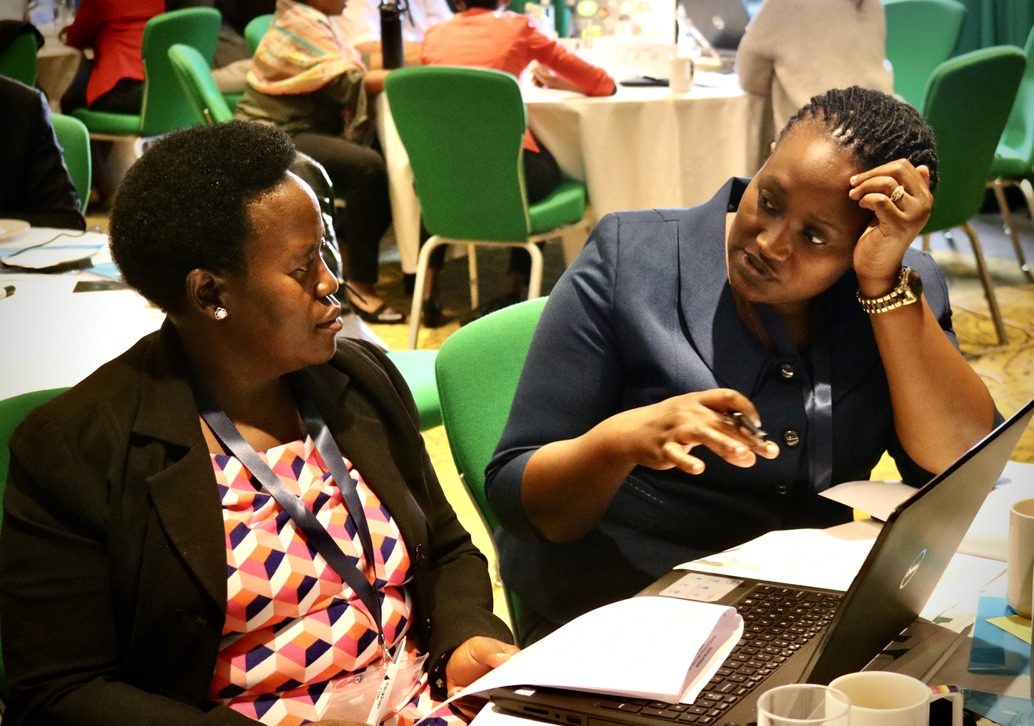Stakeholder Engagement—at a Distance
Bringing together diverse stakeholders is never simple, and doing so during a global public health crisis presents additional challenges. However, for the USAID–funded Economics of Natural Capital in East Africa project (NatCap), identifying creative approaches to solve complex problems is standard procedure. The project is tasked with documenting and elevating the current and perceived value of natural capital to strengthen management of four conservation landscapes in East Africa. Natural capital includes the resources and services that nature provides, from forests and fish to carbon storage. Project staff are working with partners to assess the value of these landscapes, which span international boundaries across six countries, and to help stakeholders at the community, national, and regional level use the project’s findings to inform management and policy decisions.
In late August, the NatCap team hosted the first of five virtual stakeholder engagement sessions, bringing together 54 participants from Tanzania and Kenya to better understand perceptions of regional natural resources. To prepare for this session, Environmental Incentives and the East African Community (EAC) secretariat, developed a meeting strategy to help each participant actively engage in the virtual environment. Replicating the vibrant atmosphere of in-person stakeholder meetings required some innovation, including procuring internet bundles for participants in remote areas and employing World Café style breakouts. When the sessions began, stakeholders from across the region tuned in and contributed to a lively discussion on the perceptions of conservation and development in the key transboundary landscapes. Using Feedback to Inform Communication
Gathering this stakeholder feedback is critical to inform the project’s communications and outreach strategy, which will amplify USAID, EAC, and Anchor Environmental‘s efforts to demonstrate the monetary, cultural, and health benefits of natural capital in the four landscapes. Deputy Chief of Party Caroline Ouko encouraged session participants to treat the process as their own, as their contextual knowledge is key to creating audience-specific outreach materials. The sessions were designed to better understand:
- Stakeholder perceptions of ecosystem services in each landscape and threats to those services
- Important policymakers and implementers to engage in landscape protection
- Best practices for communicating with various stakeholders
This first engagement laid the groundwork for four subsequent workshops, involving 200 participants from Burundi, Kenya, Rwanda, South Sudan, Tanzania, and Uganda. After each intense three-hour engagement, the NatCap project team synthesized the experience in a summary report. The discussions centered on collaborative stewardship—all participants are part of a larger community that must work together to protect the natural resources of the region. Key takeaways included:
- Stakeholders are looking for inclusive management coordination with authorities
- Messaging must be targeted and include translations that resonate with the various actors
- Local communities’ livelihoods must be considered, including providing support for income-generating activities and human well–being goals while facilitating stewardship of natural capital
The five workshop reports informed a communications plan that will guide efforts to effectively connect the value of natural capital and the findings of conservation research with key audiences. The plan includes local and regional dissemination tactics and products for non-governmental organizations, regional governments, community-based organizations, and private sector actors.
Looking Forward
As communities continue to cope with the limitations brought on by the COVID-19 pandemic, it is clear that virtual facilitation is not a stop-gap solution but, rather, an effective tool to manage long–term engagement. These stakeholder engagement sessions highlighted the value of nimble planning, finding commonalities across participants, and making the most of tools to leverage remote engagement. The sessions’ success was in part due to the commitment of project coordinators from all six countries, who went the extra mile to create an outreach strategy that ensured attendees could actively participate. The coordinators purchased internet bundles, co-facilitated the calls, and even provided translation services as needed.
After successfully organizing the first virtual stakeholder engagement sessions, the NatCap project team is working with the EAC and various stakeholders to design a strategy to effectively engage policymakers. The team plans to package the findings into actionable products for decision makers, with the hope that this will lead to an increase in evidence-based conservation management practices in the East Africa region. In the coming months, the team expects to release a Preliminary Assessment Report with complementary messaging products and will monitor the uptake of the findings over the span of the project.



